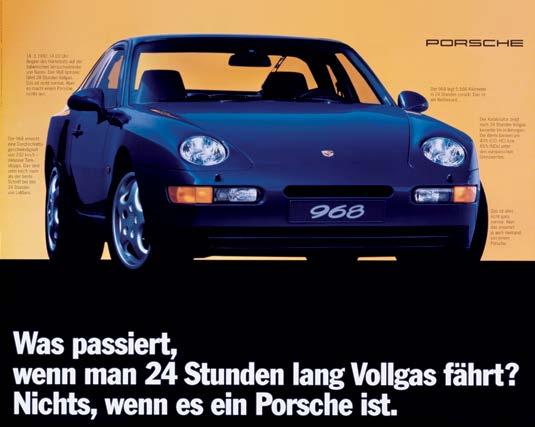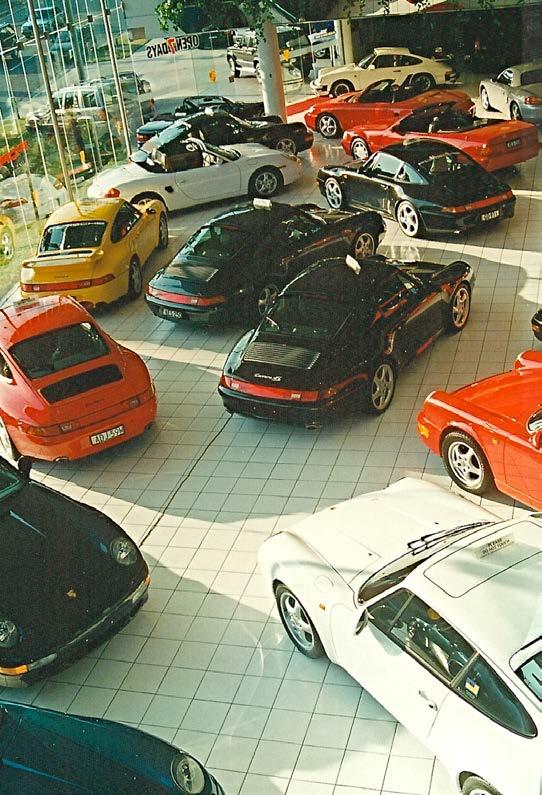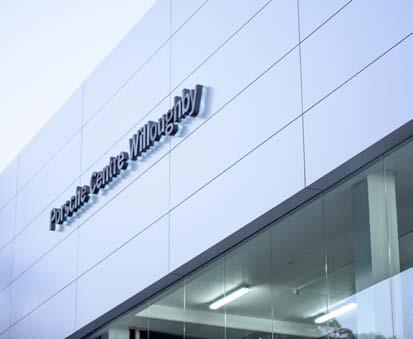
3 minute read
993 911 THE 1994 - 1998
Porsche Model Spotlight
In 1994, the 964 model line was replaced by the 993. This new model was a significant advance, not just from a technical, but also a visual perspective.
Advertisement
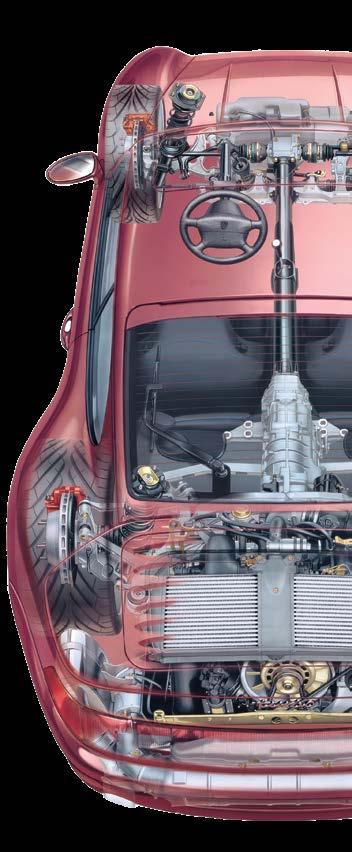
The front wings of the 993 Carrera were wider and flatter. Because of the shorter luggage compartment lid, the black rubber lip forming the seam between the body and the front bumper on the G model and the 964 was omitted.
The rear wings were also widened and ran in a straighter line towards the rear with the higher-positioned tail lights. The 993 was initially available as a Coupé and Cabriolet with rear-wheel drive. For model year 1995, there followed the all-wheel Carrera 4 and 911 Turbo versions with viscous multi-plate clutch and in model years 1996/97, the Carrera 4S and the Carrera S.
The Targa model produced as of MY 1996 featured a large, electrically adjustable sliding roof made of tinted laminated glass instead of the removable soft top and existing rollover bar for the first time. The Carrera and Targa models were powered by a new 3.6-litre engine, which initially developed 272 PS and 285 PS as of MY 1996.
STOLEN!
A 993 in oak green was stolen from the street when a delivery truck driver unloaded it and and left the keys in the ignition. Somebody had been admiring the back end of this 993 and just thought "I need that". The truck driver came into reception to say; "I have a car for you" - we went out to collect it and found it had gone! Can you imagine? I was going to have a baby!

We lost that Porsche for seven days, until I got a call from the police at 2:00 am. "We've found your car, it's in a car park can you come down?"
I go down and it's there with no damage, with mileage indicating it was driven from Willoughby to Leichhardt without plates. Somebody had become so emotional about the car they just couldn't help themselves.
That was me in 1990 and the glass was the new Scuderia Veloce Motors showroom at Willoughby. Anyone with an abiding interest in architecture and building design could not have failed to be impressed and to see that showroom subsequently filled with some of the world’s best sports and supercars – well it was the old adage of the whole being ‘better than the sum of its parts’. That time of course, saw the changing of the guard in terms of Porsche engine cooling, from air to water, but Porsche had something of a ‘Goodbye, Farewell and Amen’ treat in store.

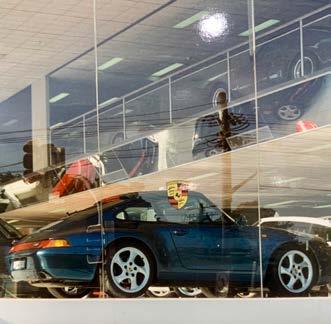
Perhaps with the 20/20 vision of hindsight, the 993 generation of the 911 has often been lauded as the best of the 911 series with advocates citing its beauty and its great performance. It is somewhat of a well-worn phrase but, ‘even by today’s standards’, it was a standout and that last gasp of fresh air that Porsche blew into the body of genuine motoring. At the peak of the pyramid of models, sat the 911 993 Turbo S. Introduced in the penultimate year of production of the 993, the Turbo S saw a power upgrade to 450 PS, from a larger Triple K K-24 turbochargers, an additional oil cooler and a modified Motronic engine management system. Its kerb weight of 1,500 kg brought up 60 mph in 3.6 seconds, 100 mph in 8.9 seconds and, in certain situations, a top speed just beyond 180 mph.
Constructed with exceptional attention to detail by Porsche’s Exclusive Department, the Turbo S was priced 50% higher than the 993 Turbo when new and worldwide production totalled just 345 cars, 26 of which were produced in RHD with only 15 cars reaching Australian shores. It was truly an enormous step up in performance, looks, exclusivity and, inevitably, price over the standard 911 Turbo.
"My 911’s motor was in pieces in the Willoughby workshop. Surely this was the perfect time to trade in? There was a Guards Red / black leather 944 Cabriolet with only 10,000 kms in the showroom. I fell in love. Two interesting points - the boot in a 944 Cabriolet must be the shallowest boot of any car, and for some reason the heated rear view mirrors are permanently on when the car is running.


In 2002 I had my one and only big accident when a driver drove through a stop sign. The 944 was brilliant and I was not injured."
PORSCHE 968 1992-1995
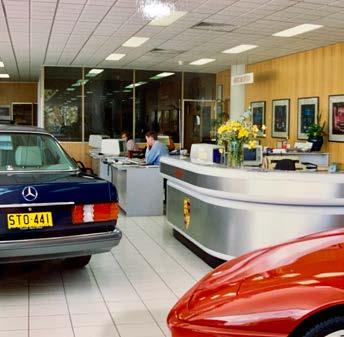
The last development stage of fourcylinder transaxle models at Porsche was initiated with the 968 in model year 1992. Most of the body parts for the successor to the 944 S2 were adopted from the previous model. Nonetheless, the front end of the 968 in particular was much more modern – and partly anticipated the front design of the later 911 (type 993). A sixspeed manual transmission and a Tiptronic transmission were available for the 968 for the first time. This model also heralded the first use of VarioCam variable intake camshaft control.
